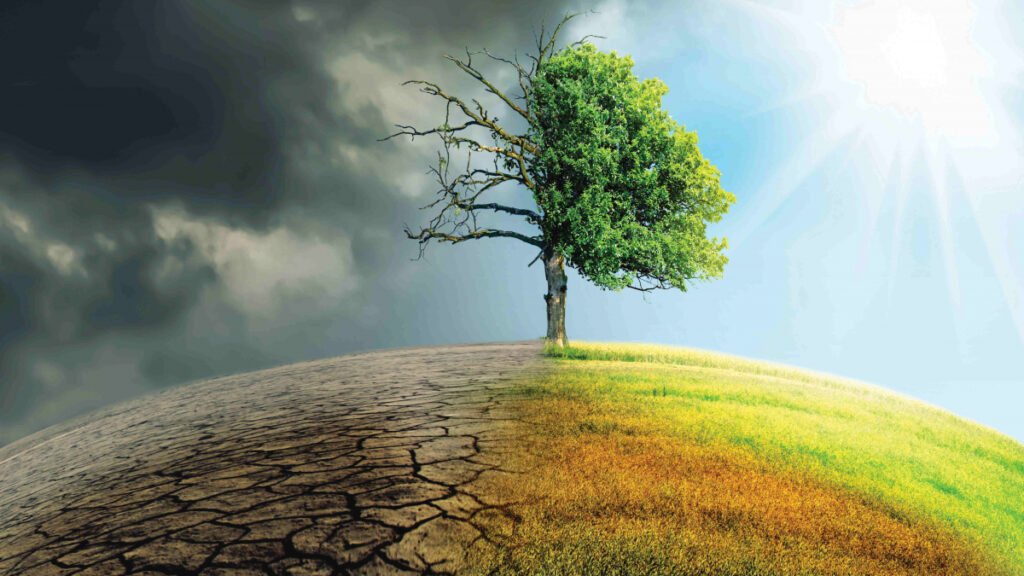Environmental Degradation: Balancing Economic Growth and Sustainability in Pakistan
Pakistan is one of the few countries to achieve “on track status” on Climate Change. The status has been attained in large part as a result of the government’s numerous policies and programmes that were put in place to protect the environment and address climate change. These include initiatives like “Recharge Pakistan,” “Protected Areas Initiative,” “Ten Billion Tree Tsunami,” and “Clean and Green Pakistan.”
Pakistan has recently given substantial consideration to tackling the world’s mounting environmental problems. Numerous Acts have been promulgated, along with numerous policies and public sector initiatives that have already come into force. Significant achievements include the development of environmental laboratories, environmental courts, national environment quality standards, the National Energy Efficiency and Conservation Authority (NEECA), national environmental quality standards, and the strengthening of environmental protection agencies (EPAs) at the federal and provincial levels. While the government leads and regulates the environmental sustainability agenda of the country, the responsibility for the conservation of the environment and its resources rests with all stakeholders, including the public and private sectors, as well as individuals.
Although several private sector players have piloted numerous initiatives including awareness campaigns, cleaning drives, WASH programs, etc., there has been no check and balance on acts that have been harming the environment. These include irresponsible hospital and municipal waste disposal, depletion of forest cover, extensive and unsustainable use of water in agriculture, etc. In addition, imprudent individual behavior, such as irresponsible littering, extensive use of motorized transport, and burning of crop residue post-harvest, are all incidences that are having a ripple effect on exacerbating environmental challenges. Therefore, while a lot is being done towards preserving and conserving the environment, there is still a long way to go.
Climate change is affecting every country disrupting economies and affecting people’s lives. The poorest and most vulnerable people are being affected the most. Environment-friendly policies and initiatives by the government helped Pakistan to be on track with SDG 13 on Climate Change. However, it is even more important now to mobilize all stakeholders, public, private, and individuals, to keep pace and raise the ambition on mitigation and adaptation, investing in sustainable solutions, in green jobs, and in the green economy so that the country, communities, and people are more resilient, and leave no one behind.
Pakistan is among those countries that are at the highest risk of environmental catastrophe.
The Global Climate Risk Index¹, in its annual report for 2020, has placed Pakistan in fifth spot on the list of countries most vulnerable to climate change. The report also states that the country has suffered economic losses worth USD 3.8 billion and has been witness to 152 extreme weather events between 1999 to 2018.
The UN SDGs were formally adopted to act as the national development framework in 2016, and since then have formed the guiding principle of many development agendas in the country. Pakistan was ranked 130 globally for the fulfillment of its global sustainable development goals in 2019 and scored a meager 55.6 on the global index score, indicating that much needs to be done. National action plans and policies such as the National Energy Efficiency and Conservation Act 2016, National Water Policy 2018 and comprehensive regulatory framework, the National Action Plan on Sustainable Consumption and Production, and the newly minted draft of Alternate and Renewable Energy Policy 2019, have also been aligned with these SDGs to ensure their integration into the country’s legal fabric. These policies culminated in projects such as the Billion Tree Tsunami and the Clean Green Pakistan initiative.
A recent report by United Nations Sustainable Development Network¹⁸ highlights that Pakistan is well behind in terms of achieving most of the SDGs before the decade is over. Out of 166 countries evaluated, Pakistan ranks 134. The report however does show Pakistan achieving SDG 13, which focuses on climate change.
The climate change governance domain in Pakistan is informed by three key pillars: The National Climate Change Policy (2012), The Framework for Implementation of Climate Change Policy (FICCP) (2013), and the Pakistan Climate Change Act (2017). The climate change policy has three goals:
1) To protect vulnerable populations against the impacts of climate change
2) To ensure that the pursuit of sustainable development is not affected by climate change
3) To fulfill Pakistan’s international commitments on climate change.
Environmental protection itself contributes to economic growth. Somebody makes and sells the air pollution control technologies we put on power plants and motor vehicles. Somebody builds sewage and water treatment facilities. Just as someone makes money off of solar cells and windmills and whoever invents the 1,000-mile high capacity battery that will power electric cars someday will become very, very rich.
The climate problem is not caused by economic growth but by the absence of effective public policy designed to reduce greenhouse gas emissions. There is nothing incompatible with capitalism and environmental protection as long as rules are in place that control the environmental impacts of the products and services we make and use. With those rules in place, a concern for environmental sustainability can and will permeate everyday decision-making in the private, nonprofit, and governmental organizations we all benefit from.
